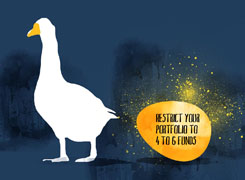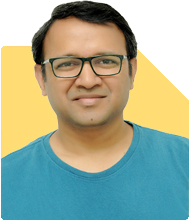Omkeshwar Singh | Answer |Ask -Follow
Head, Rank MF - Answered on Nov 16, 2022

Below is my MF portfolio. I am planning to invest for the next 13-15 years for retirement and as well as my son's higher education who is 4.5 years old. I am 36 years old.
Please let me know if I can consolidate my investments. Apart from this I have investments in PPF, NPS as well.
| Fund Name | Category | Amount/Month |
| Quant Tax Plan - Direct Plan | ELSS | 4000 |
| Mirae Asset Tax Saver Fund - Direct Growth | ELSS | 6000 |
| Axis Long Term Equity Fund - Direct Growth | ELSS | 2000 |
| Kotak Flexicap Fund - Direct Growth | Flexi Cap | 2500 |
| PGIM India Flexi Cap Fund - Direct Plan - Growth | Flexi Cap | 4000 |
| Quant Active Fund | Flexi Cap | 2500 |
| Nippon India Index Fund S&P BSE | Index Fund | 4000 |
| Mirae Asset Emerging Bluechip Fund - Direct Plan - Growth | Large and Mid Cap | 2000 |
| Axis Bluechip Fund - Direct Growth | Large Cap | 2000 |
| PGIM India Midcap Opportunities Fund - Direct Plan -G | Mid Cap | 4000 |
| Quant Multi Asset Fund | Multi Asset | 3000 |
| Bank of India Small Cap | Small Cap | 2000 |
| Canara Robeco Small Cap Fund - Direct Growth | Small Cap | 4500 |
| Axis Small Cap | Small Cap | 2000 |
| Quant Small Cap | Small Cap | 2000 |
| Total | 46500 |
You may like to see similar questions and answers below
Omkeshwar Singh | Answer |Ask -Follow
Head, Rank MF - Answered on Sep 08, 2021
Omkeshwar Singh | Answer |Ask -Follow
Head, Rank MF - Answered on Oct 17, 2022
Ramalingam Kalirajan |10894 Answers |Ask -Follow
Mutual Funds, Financial Planning Expert - Answered on Apr 12, 2024
Ramalingam Kalirajan |10894 Answers |Ask -Follow
Mutual Funds, Financial Planning Expert - Answered on Jul 31, 2024
Ramalingam Kalirajan |10894 Answers |Ask -Follow
Mutual Funds, Financial Planning Expert - Answered on Feb 06, 2025
Radheshyam Zanwar |6747 Answers |Ask -Follow
MHT-CET, IIT-JEE, NEET-UG Expert - Answered on Dec 16, 2025
Shalini Singh |181 Answers |Ask -Follow
Dating Coach - Answered on Dec 16, 2025
Patrick Dsouza |1429 Answers |Ask -Follow
CAT, XAT, CMAT, CET Expert - Answered on Dec 16, 2025
Nayagam P P |10858 Answers |Ask -Follow
Career Counsellor - Answered on Dec 16, 2025
Nayagam P P |10858 Answers |Ask -Follow
Career Counsellor - Answered on Dec 16, 2025
Samraat Jadhav |2510 Answers |Ask -Follow
Stock Market Expert - Answered on Dec 16, 2025
Samraat Jadhav |2510 Answers |Ask -Follow
Stock Market Expert - Answered on Dec 16, 2025
Nayagam P P |10858 Answers |Ask -Follow
Career Counsellor - Answered on Dec 16, 2025
Nayagam P P |10858 Answers |Ask -Follow
Career Counsellor - Answered on Dec 16, 2025
Ramalingam Kalirajan |10894 Answers |Ask -Follow
Mutual Funds, Financial Planning Expert - Answered on Dec 16, 2025




























